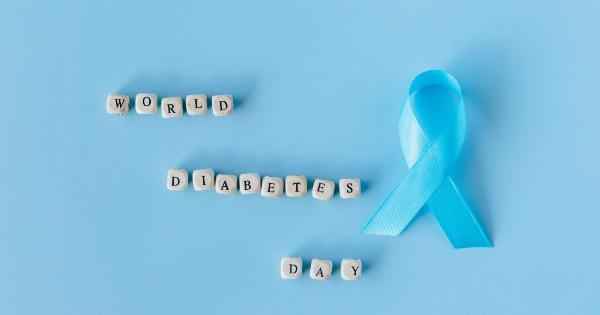Urinary Tract Infection (UTI) is a common health concern among children. It occurs when bacteria enters the urinary tract, leading to infection in the kidneys, bladder, or urethra.
UTIs can cause discomfort and pain for children, and if left untreated, may lead to more serious complications. As a parent, it is crucial to understand the causes, symptoms, diagnosis, treatment, and prevention of UTIs in kids. This comprehensive guide aims to provide you with all the necessary information to effectively handle UTIs in your child.
Causes of UTIs in Kids
UTIs in children are usually caused by the presence of bacteria in the urinary tract. Common sources of infection include:.
- Failure to wipe properly: Insufficient wiping after using the toilet can leave bacteria near the urethra. This bacteria can then travel up to the bladder and cause an infection.
- Poor hygiene: Children who do not maintain proper hygiene, such as not washing hands before and after using the toilet, are at an increased risk of UTIs.
- Urinary blockage: Any condition that obstructs the flow of urine, such as kidney stones or anatomical abnormalities, can lead to UTIs.
- Constipation: Chronic constipation can put pressure on the bladder and increase the likelihood of UTIs.
- Recent catheterization: The use of a catheter, commonly during medical procedures, can introduce bacteria into the urinary tract.
- Weakened immune system: Children with weakened immune systems, such as those with certain medical conditions, are more susceptible to UTIs.
Signs and Symptoms
Recognizing the signs and symptoms of UTIs in children can help parents seek timely medical attention. Common indications include:.
- Urinary urgency or frequency: If your child suddenly develops a need to urinate more often than usual or experiences urgency, it could be a sign of a UTI.
- Burning sensation during urination: Children with UTIs may complain of pain or a burning sensation when passing urine.
- Bedwetting: UTIs can sometimes cause a regression in urinary control, leading to bedwetting, even in children who were previously toilet-trained.
- Fever: A high temperature accompanied by other urinary symptoms may indicate a kidney infection.
- Abdominal or back pain: Children with UTIs may experience pain in the lower abdomen or back.
- Foul-smelling urine: If your child’s urine has an unusually strong odor, it could be a sign of an infection.
Diagnosing UTIs in Kids
If you suspect your child has a UTI, it is important to consult a healthcare professional who can accurately diagnose the infection. The following diagnostic methods may be used:.
- Urine sample analysis: A urine sample is collected and analyzed to check for the presence of bacteria or white blood cells, indicating an infection.
- Urinalysis: This test examines various components of the urine and can provide important information about a UTI.
- Ultrasound: An ultrasound may be performed to identify any structural abnormalities in the urinary tract.
- X-ray or CT scan: These imaging tests can help detect any blockages or abnormalities that may be causing recurrent UTIs.
- Voiding cystourethrogram (VCUG): This test involves the injection of a contrast dye into the bladder to visualize the urinary tract and identify any reflux or abnormalities.
Treatment Options
The treatment approach for UTIs in children typically involves a course of antibiotics prescribed by a healthcare professional. The specific medication and duration of treatment will depend on the severity of the infection and the child’s age.
Along with antibiotics, it is important to encourage your child to drink plenty of fluids to help flush out the bacteria from the urinary tract. Follow-up urine tests may be required after completing the antibiotic course to ensure the infection has cleared.
Preventing UTIs in Kids
Preventing urinary tract infections in children can significantly reduce their risk of developing complications. Here are some preventive measures:.
- Encourage good hygiene: Teach your child to wipe from front to back after using the toilet to prevent the spread of bacteria from the anal area to the urethra.
- Promote regular handwashing: Emphasize the importance of washing hands with soap and water before and after bathroom visits.
- Stay hydrated: Ensure your child drinks an adequate amount of fluids throughout the day to maintain regular urinary function.
- Empty the bladder regularly: Encourage your child to urinate regularly, as holding in urine can increase the risk of infection.
- Avoid bubble baths: Bubble baths and strong soaps can irritate the urethra, making it more susceptible to bacterial invasion.
- Address constipation: Promote a fiber-rich diet and ensure your child’s bowel movements are regular to prevent constipation.
When to Seek Medical Attention
While most UTIs can be effectively treated with antibiotics, it is important to be aware of situations that require immediate medical attention. Contact your healthcare provider if:.
- Your child is under 6 months old and exhibits UTI symptoms.
- Your child has a high fever (above 102°F or 38.9°C) along with urinary symptoms.
- Your child shows signs of dehydration, such as dry mouth, decreased urination, and lethargy.
- Your child experiences severe pain or discomfort in the lower abdomen or back.
- Your child does not show improvement within 48 hours of starting antibiotics.
Remember, timely medical intervention is crucial to ensure the well-being of your child.




























